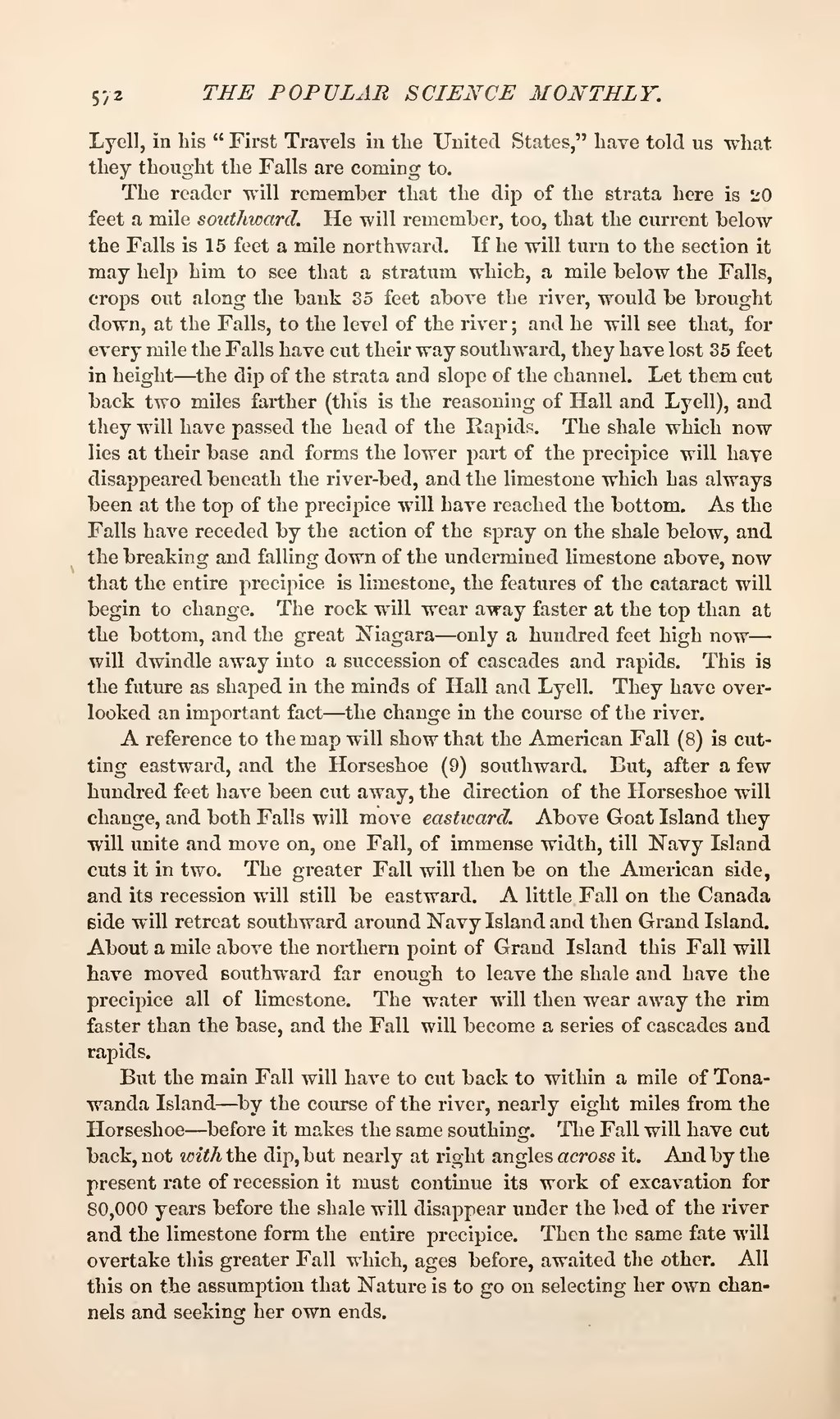Lyell, in his "First Travels in the United States," have told us what they thought the Falls are coming to.
The reader will remember that the dip of the strata here is 20 feet a mile southward. He will remember, too, that the current below the Falls is 15 feet a mile northward. If he will turn to the section it may help him to see that a stratum which, a mile below the Falls, crops out along the bank 35 feet above the river, would be brought down, at the Falls, to the level of the river; and he will see that, for every mile the Falls have cut their way southward, they have lost 35 feet in height—the dip of the strata and slope of the channel. Let them cut back two miles farther (this is the reasoning of Hall and Lyell), and they will have passed the head of the Rapids. The shale which now lies at their base and forms the lower part of the precipice will have disappeared beneath the river-bed, and the limestone which has always been at the top of the precipice will have reached the bottom. As the Falls have receded by the action of the spray on the shale below, and the breaking and falling down of the undermined limestone above, now that the entire precipice is limestone, the features of the cataract will begin to change. The rock will wear away faster at the top than at the bottom, and the great Niagara—only a hundred feet high now—will dwindle away into a succession of cascades and rapids. This is the future as shaped in the minds of Hall and Lyell. They have overlooked an important fact the change in the course of the river.
A reference to the map will show that the American Fall (8) is cutting eastward, and the Horseshoe (9) southward. But, after a few hundred feet have been cut away, the direction of the Horseshoe will change, and both Falls will move eastward. Above Goat Island they will unite and move on, one Fall, of immense width, till Navy Island cuts it in two. The greater Fall will then be on the American side, and its recession will still be eastward. A little. Fall on the Canada Bide will retreat southward around Navy Island and then Grand Island. About a mile above the northern point of Grand Island this Fall will have moved southward far enough to leave the shale and have the precipice all of limestone. The water will then wear away the rim faster than the base, and the Fall will become a series of cascades and rapids.
But the main Fall will have to cut back to within a mile of Tonawanda Island—by the course of the river, nearly eight miles from the Horseshoe before it makes the same southing. The Fall will have cut back, not with the dip, but nearly at right angles across it. And by the present rate of recession it must continue its work of excavation for 80,000 years before the shale will disappear under the bed of the river and the limestone form the entire precipice. Then the same fate will overtake this greater Fall which, ages before, awaited the other. All this on the assumption that Nature is to go on selecting her own channels and seeking her own ends.
